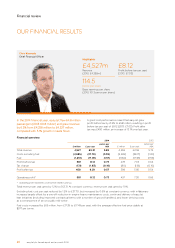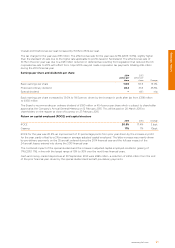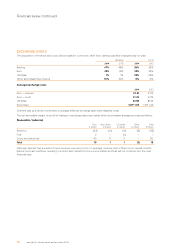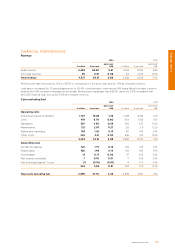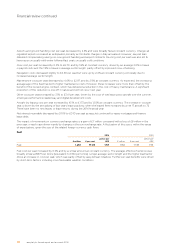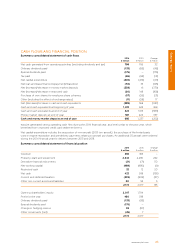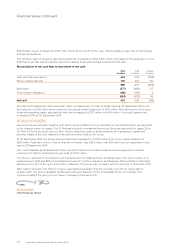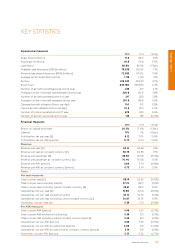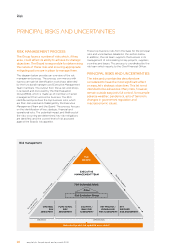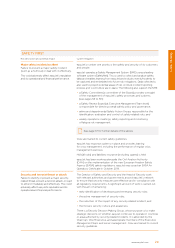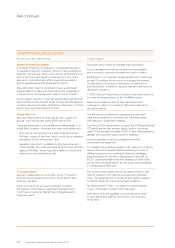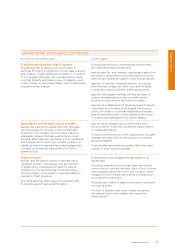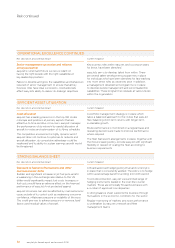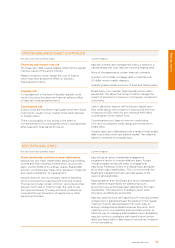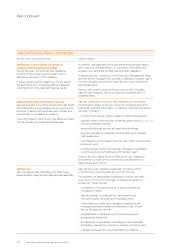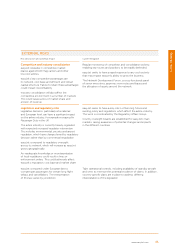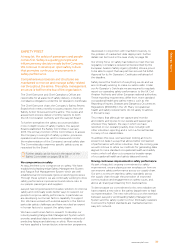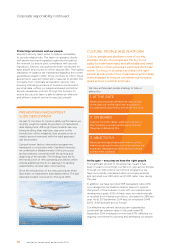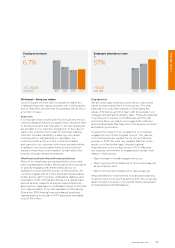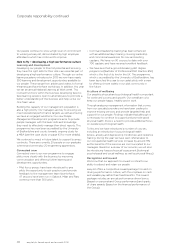EasyJet 2014 Annual Report Download - page 32
Download and view the complete annual report
Please find page 32 of the 2014 EasyJet annual report below. You can navigate through the pages in the report by either clicking on the pages listed below, or by using the keyword search tool below to find specific information within the annual report.
OPERATIONAL EXCELLENCE
Risk description and potential impact Current mitigation
Impact of mass disruption
A number of factors could lead to widespread disruption
to easyJet’s network, including forces of nature (extreme
weather, volcanic ash, etc.), union activity and strike action,
acts of terrorism and epidemics/pandemics. Any mass
disruption could adversely affect easyJet’s reputation
and its operational and financial performance.
Mass disruption has the potential to have a significant
adverse affect on easyJet’s financial results, especially if
it should occur during easyJet’s peak summer months.
As the largest number of easyJet aircraft are positioned at
Gatwick (the world’s busiest single runway airport) easyJet
could be disproportionately affected by the closure of that
airport for a significant period of time.
Processes are in place to manage mass disruption.
Crisis management exercises are performed regularly
and a business continuity programme is also in place.
Board policy is to maintain target liquidity at £4 million per
aircraft. This allows the business to manage the impact
of downturns in business or temporary curtailment of
activities better. In addition, easyJet has secured business
disruption insurance.
In 2014, Gatwick Airport has invested in improved resilience
to meet the requirements of the McMillan review.
easyJet and Gatwick Airport have developed joint
contingency plans to provide an effective response to
disruptive events.
Single fleet risk
easyJet is dependent on Airbus as its sole supplier for
aircraft, with two aircraft types (A319 and A320).
There are significant cost and efficiency advantages of a
single fleet; however, there are two main associated risks:
• technical or mechanical issues that could ground the
full fleet, or part of the fleet, which could cause negative
perception by the flying public; and
• valuation risks which crystallise on the ownership exit
of the aircraft. The main exposure at this time is with the
ageing A319 fleet, where easyJet is reliant on the future
demand for second-hand aircraft.
The efficiencies achieved by operating a single fleet
type are considered to outweigh the risks associated
with easyJet’s single fleet strategy.
The Airbus A320 family (which includes the A319) and Boeing
737 family are the two primary fleets used for short-haul
travel. There are approximately 5,000 of each fleet operating
globally with a proven track record for reliability.
easyJet operates a rigorous established aircraft
maintenance programme.
To mitigate the potential valuation risks, easyJet constantly
reviews the second-hand market and has a number of
different options when looking at fleet exit strategies.
easyJet targets an owned to leased split of aircraft of
80:20. Leasing facilitates the exit strategy of older A319s
and protects residual values, as well as providing flexibility
in managing the fleet size.
IT system failure
easyJet is dependent on a number of key IT systems
and processes operated at London Luton airport and
other key facilities.
A loss of systems or access to facilities, including
the website, could lead to significant disruption and
could have an adverse operational, reputational and
financial impact.
Key systems are hosted across two data centres in two
distinct locations with failover arrangements between
them. This arrangement is reviewed and tested regularly
to identify areas for improvement and resilience.
An experienced IT team is in place to respond rapidly
to any unforeseen incidents that may arise.
Alternative sites are available should there be a need
to relocate critical staff at short notice due to a loss
of facilities.
Risk continued
30 easyJet plc Annual report and accounts 2014


